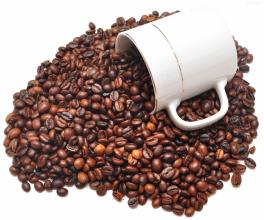Brief introduction of Grinding scale and Historical Information of Flavor description method for Colombian hand Coffee
Brief introduction of Grinding scale of hand-made Colombian Coffee with Flavor description method
Jamie Valencia, a history professor who is preparing for the construction of the Colombian pavilion, said that as tourism between Colombia and China heats up, cultural exchanges between the two countries will become more frequent. He said: "although Chinese people like to drink tea, it is not impossible to gradually change some of their food culture. Now there have been some changes."
How does the caffeine content change when using different beans? The previous comparison is the comparison of caffeine content in different extraction methods of the same kind of beans. Well, when using different coffee beans, in fact, if the amount of beans used is the same, the caffeine content of ESP is often higher than that of hand flushing. Because robusta beans are rarely used in hand flushing, and robusta beans are often used in matching beans. It is well known that the caffeine content of the same amount of Luodou is much higher than that of Arabica beans.
Kenya AA pays more attention to the grass flavor, while Colombian beans are my favorite Dunhill pipe scent, which is very noble. Of course, personal feelings may not be exactly the same, maybe there will be a better way to identify people with more contact.
In 1940 and 1960, coffee was fast-eating, and rotten coffee was dominant.
The second wave, 1966 Murray 2000, coffee boutique, re-baked lattes are popular, represented by Starbucks and other coffee shops.
The third wave, 2003 to the present, coffee aesthetic, manors, varieties, black coffee.
The third wave is the individual coffee that has become popular in recent years. The trend of hand-brewed coffee and boutique coffee is most popular in Japan and Taiwan in Asia, and gradually affects the mainland.

Important Notice :
前街咖啡 FrontStreet Coffee has moved to new addredd:
FrontStreet Coffee Address: 315,Donghua East Road,GuangZhou
Tel:020 38364473
- Prev

Flavor description method for geographical planting environment of coffee in Sumatra, Indonesia
Flavor description of geographical growing environment of Indonesian Sumatra coffee Mantenin coffee has a very rich flavor, fragrant, bitter, mellow, with a little sweetness. Most coffee lovers drink individually, but it is also an indispensable variety of mixed coffee. Mantenin coffee is considered to be the richest coffee in the world. When tasting Mantenin, you can taste it on the tongue.
- Next

Description of characteristics and flavor of Brazilian Hilado coffee bean taste treatment grinding scale
Brazilian Hilado coffee beans characteristic flavor description taste treatment grinding scale fragrance is quite good. According to coffee experts, semi-washed coffee beans contain fewer defective beans than the drying method, and are rich in sour taste. If the use of shallow baking has the smell of grass, while deep baking will make the bitterness extremely obvious, so it is most suitable for moderate baking. Serrado Coffee from Brazil
Related
- Detailed explanation of Jadeite planting Land in Panamanian Jadeite Manor introduction to the grading system of Jadeite competitive bidding, Red bid, Green bid and Rose Summer
- Story of Coffee planting in Brenka region of Costa Rica Stonehenge Manor anaerobic heavy honey treatment of flavor mouth
- What's on the barrel of Blue Mountain Coffee beans?
- Can American coffee also pull flowers? How to use hot American style to pull out a good-looking pattern?
- Can you make a cold extract with coffee beans? What is the right proportion for cold-extracted coffee formula?
- Indonesian PWN Gold Mandrine Coffee Origin Features Flavor How to Chong? Mandolin coffee is American.
- A brief introduction to the flavor characteristics of Brazilian yellow bourbon coffee beans
- What is the effect of different water quality on the flavor of cold-extracted coffee? What kind of water is best for brewing coffee?
- Why do you think of Rose Summer whenever you mention Panamanian coffee?
- Introduction to the characteristics of authentic blue mountain coffee bean producing areas? What is the CIB Coffee Authority in Jamaica?

